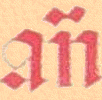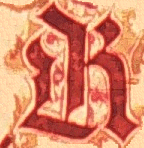| Microfilm Collection |
| |
| It was founded in 1966 as an aid for the research in plainchant history. Later it was extended continuously and systematically until it became a large and representative collection of Hungarian and Central European plainchant sources. By now it contains 724 items including the following source groups: |
|  | an almost complete set of known sources of medieval Hungary consisting of sources with or without notation; |
|  | a representative collection of sources coming from the early modern age of Hungary (16th-17th centuries); |
|  | a rich collection of sources for comparative research: sources primarily from Central Europe, to a lesser extent from Southern and Western Europe; |
|  | several important sources of polyphony and sacred song. |
For the digitization of this microfilm collection see below, section Digital Source Catalogue.
 |
| Digital Source Catalogue |
| |
| This is now a rapidly growing CD collection of digitized versions of microfilms and slides found in the Microfilm Collection (see above). The project of the digitization began in 1998 on the basis of three primary considerations: |
|  | Contrary to microfilm, the digital form preserves its quality despite frequent use, so it seems an optimal solution for both the long-term preservation and the study of the sources. |
|  | The digital images can be manipulated in many ways: can be retouched, virtually restored etc. |
|  | Beside its functioning as a ‘digital microfilm’, the digital form can be transferred easily to either traditional or digital publications. |
See more about the project and for a database of the CD collection supplied with sample images and detailed descriptions see: CD Catalogue  |
 The Antiphon Collection contains transcriptions of antiphons mainly from Hungarian, and partly from other Central European sources. The approximately 20 000 sheets are ordered according to mode and melodic types. At the same time, copies of the transcriptions are bound in the original order of the sources. This large collection served as the basis for the above-mentioned publication. In connection with the preparatory work for this edition the members of the department put the whole collection into a computer database (sample data sheet). The Antiphon Collection contains transcriptions of antiphons mainly from Hungarian, and partly from other Central European sources. The approximately 20 000 sheets are ordered according to mode and melodic types. At the same time, copies of the transcriptions are bound in the original order of the sources. This large collection served as the basis for the above-mentioned publication. In connection with the preparatory work for this edition the members of the department put the whole collection into a computer database (sample data sheet). |
 The core of the Responsory Collection consists of the transcriptions of two complete sources characteristic of the medieval ritus Strigoniensis. The responsories of Str-2 and Str-3 (see the sources section of CAO-ECE) are written in synoptic tables for facilitating the comparison of the variants in them. According to our plan, the comparative charts will be enlarged by the melodies of other Hungarian sources serving potentially as a basis for developing a musical classification of responsories, similar to that of the antiphons. The core of the Responsory Collection consists of the transcriptions of two complete sources characteristic of the medieval ritus Strigoniensis. The responsories of Str-2 and Str-3 (see the sources section of CAO-ECE) are written in synoptic tables for facilitating the comparison of the variants in them. According to our plan, the comparative charts will be enlarged by the melodies of other Hungarian sources serving potentially as a basis for developing a musical classification of responsories, similar to that of the antiphons. |
 The Graduale Collection contains for the sake of comparison the transcriptions of all melodic items (Introitus, Graduale, Alleluja, Tractus Offertorium, Communio) found in a representative set of Hungarian Graduals and several foreign sources. The melodies of the individual sources are juxtaposed in synoptic tables. The Graduale Collection contains for the sake of comparison the transcriptions of all melodic items (Introitus, Graduale, Alleluja, Tractus Offertorium, Communio) found in a representative set of Hungarian Graduals and several foreign sources. The melodies of the individual sources are juxtaposed in synoptic tables. | |
 The development of the Ordinary Collection goes back to the 70s, when comparative tables were prepared from the material of a few important Hungarian sources. From 1993 onwards the systematic work resulted in a catalogue and a melody collection of all Hungarian and a considerable amount of Czech, Moravian and Polish ordinary sources. The experiences of the work were summarized and formulated in a dissertation, see below. The melody collection contains c. 2000 items, representing about 200 Ordinary movements. The development of the Ordinary Collection goes back to the 70s, when comparative tables were prepared from the material of a few important Hungarian sources. From 1993 onwards the systematic work resulted in a catalogue and a melody collection of all Hungarian and a considerable amount of Czech, Moravian and Polish ordinary sources. The experiences of the work were summarized and formulated in a dissertation, see below. The melody collection contains c. 2000 items, representing about 200 Ordinary movements. | |
|  | Kiss, Gábor: A középkori magyarországi ordinarium-dallamok történeti, liturgiai és zenei vizsgálata a közép-európai repertoár kontextusában. [A Stylistic, Historical and Liturgical Analysis of the Medieval Hungarian Ordinary Melodies in the Context of the Central European Repertory.] Budapest, 1997. (diss.)  |